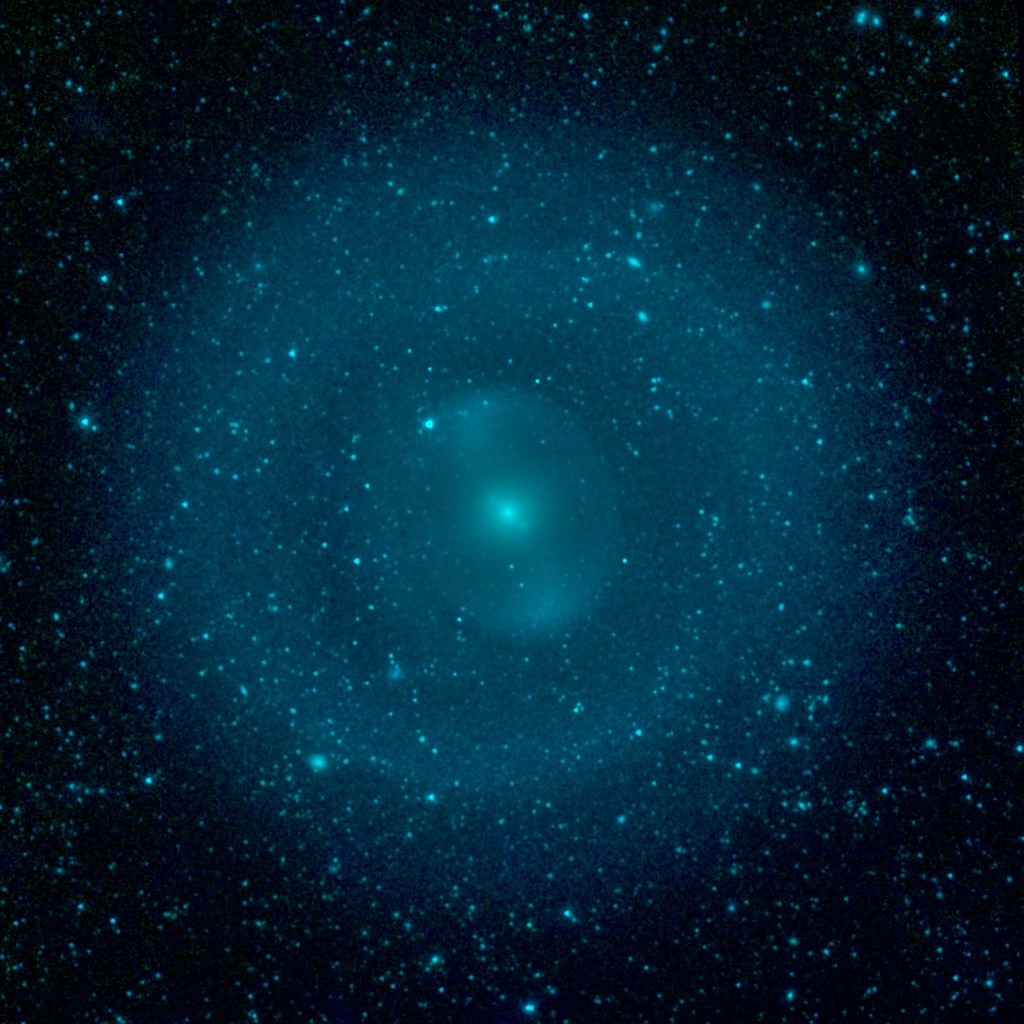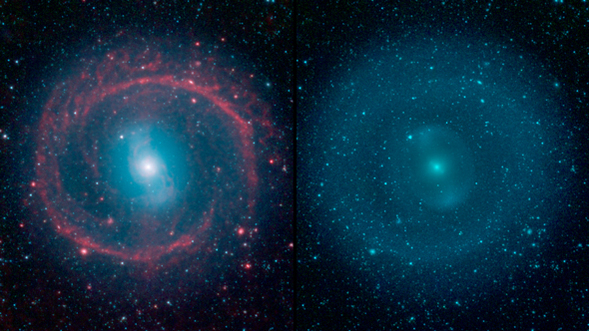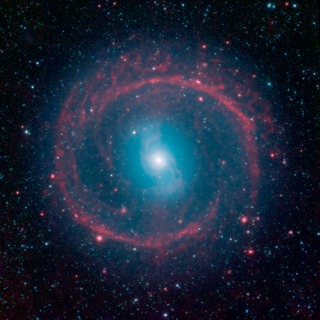
Credit: NASA/JPL-Caltech
Observation • October 22nd, 2014 • sig14-027
sig14-027
The ghostly structures highlighting the peculiar patterns of orbiting stars in the center of the galaxy NGC 1292 stand out vividly in this specially-processed image from NASA's Spitzer Space Telescope. By making detailed observations of the galaxy in infrared light, astronomers can tease out the hidden details of the strange dynamics in this barred galaxy.
The galaxy is about 12 billion years old and is located 33 million light years away in the Eridanus constellation. It is known as a barred galaxy because a central bar of stars (which looks like a blue "S" in this view) dominates its center.
When galaxies are young and gas-rich, stellar bars drive gas toward the center, feeding star formation. Over time, as the star-making fuel runs out, the central regions become quiescent and star-formation activity shifts to the outskirts of a galaxy. There, spiral density waves and resonances induced by the central bar help convert gas to stars. The outer ring is one such resonance location, where gas has been trapped and ignited into a star-forming frenzy.
This image has been processed to suppress the smooth glow of starlight that fills the center of this galaxy, enhancing our view of the peculiar structure in this region. These spokes and clumps are essentially stellar traffic jams, formed by the convoluted orbits of the billions of stars bunching up as they move through the central bar. Close examination of the outer ring reveals that it is actually composed of two distinct arcs that partially blend into one another.
Infrared light at wavelengths of 3.4 and 4.5 microns are rendered in blue and green, combining into a single cyan tone showing the distribution of stars.
About the Object
- Name
- NGC 1291
- Type
- Galaxy > Type > Spiral
- Galaxy > Type > Barred
- Distance
- 33,000,000 Light Years
- Redshift
- 0.002799
Color Mapping
| Band | Wavelength | Telescope |
| Infrared | 3.6 µm | Spitzer IRAC |
| Infrared | 4.5 µm | Spitzer IRAC |
Astrometrics
- Position ()
- RA =3h 17m 18.2s
- Dec = -41° 6' 29.3"
- Field of View
- 14.9 x 14.9 arcminutes
- Orientation
- North is 32.5° left of vertical






